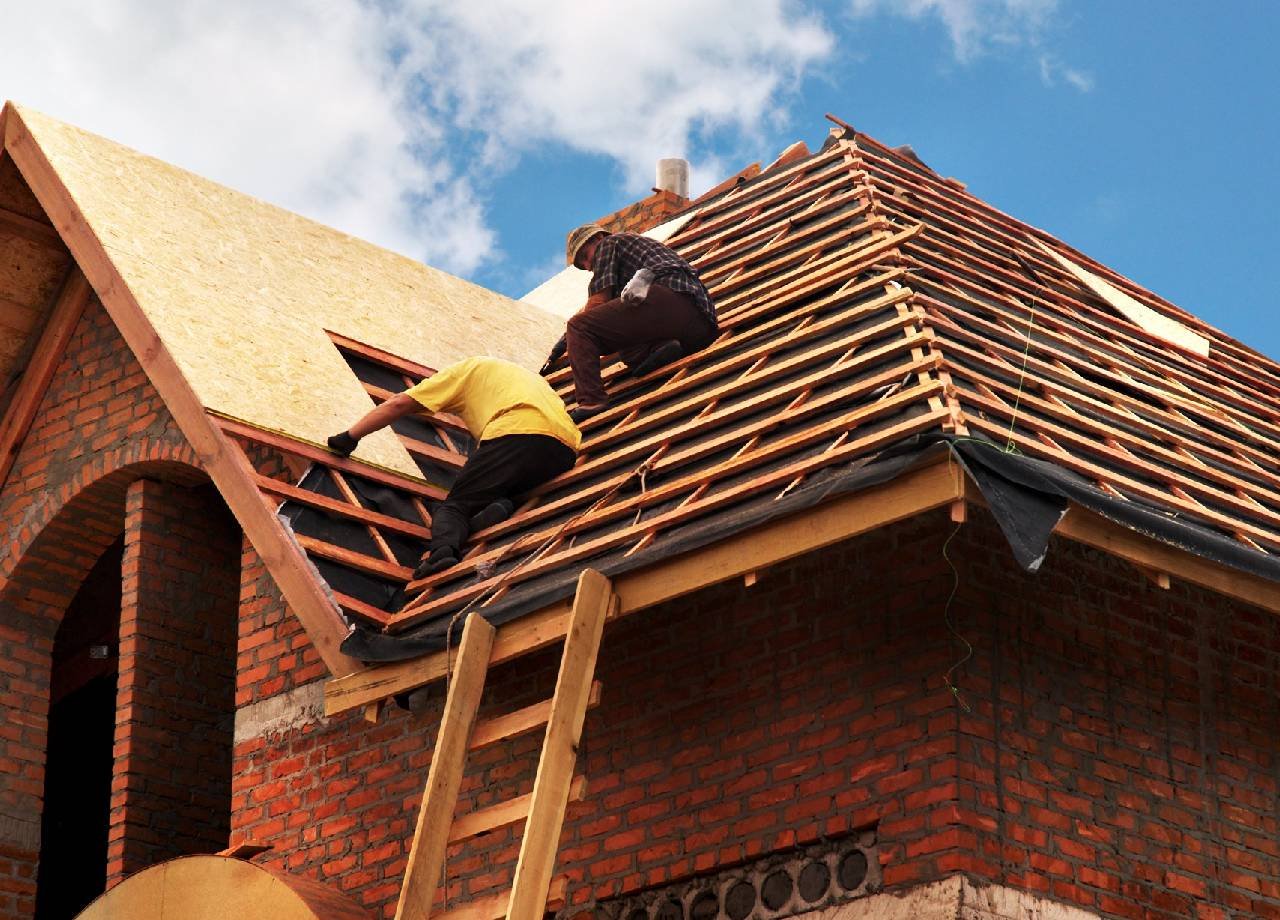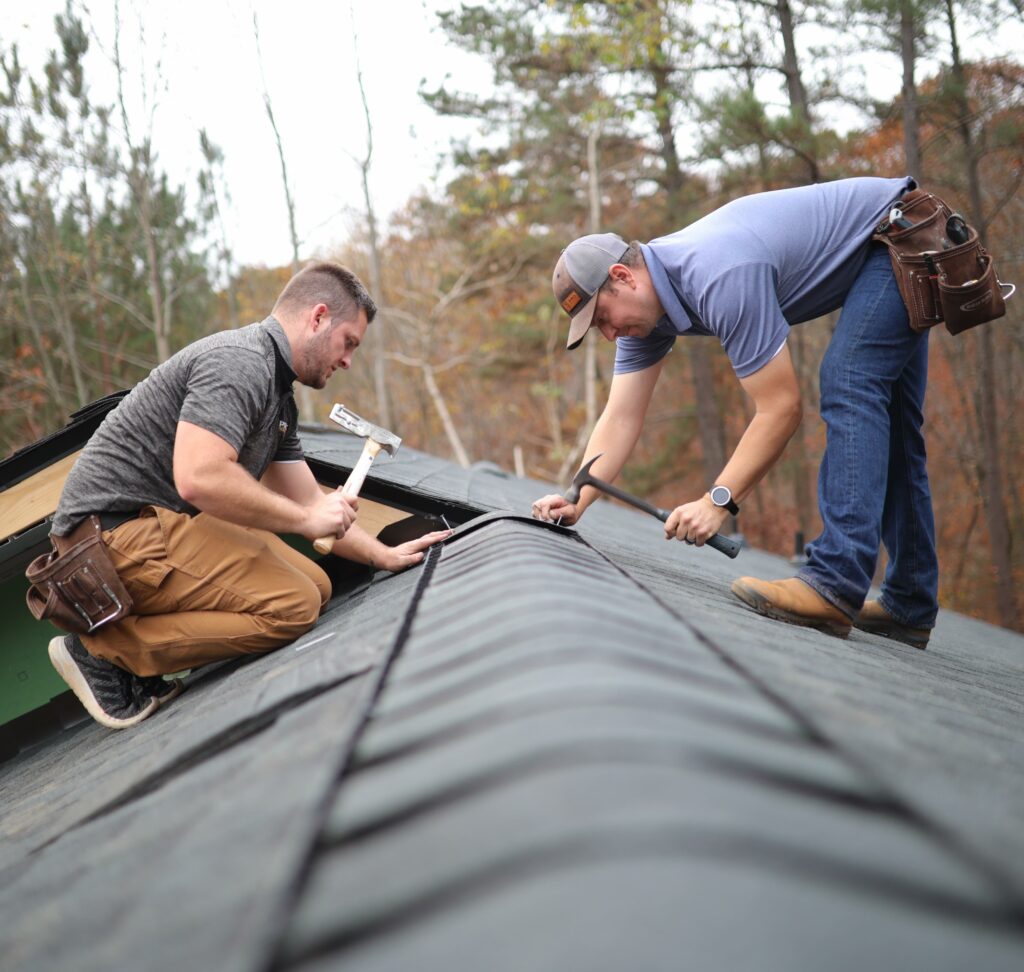A Comprehensive Guide to Effective Roof Covering Flat Roof Covering Installment
The intricacies of level roofing installation demand a meticulous strategy, beginning with a comprehensive understanding of numerous level roofing types and the necessary materials needed for ideal efficiency. A successful installment pivots not just on the choice of products yet likewise on the prep work and execution of each action involved in the procedure.
Recognizing Flat Roof Covering Types
When taking into consideration level roofing systems, it is essential to understand the different kinds available, as each offers unique advantages and downsides customized to specific needs. One of the most typical sorts of level roof coverings consist of Built-Up Roof (BUR), Changed Bitumen, and Single-Ply membranes.
Built-Up Roofing contains multiple layers of asphalt and gravel, supplying superb durability and climate resistance. It is particularly helpful in locations vulnerable to serious weather but may require even more upkeep due to its complex building.
Changed Asphalt is a popular choice for its ease of setup and versatility. It commonly utilizes a torch-applied or self-adhesive approach, which can be useful for quick fixings and lasting efficiency. Its life-span can be much shorter compared to BUR.
Single-Ply membranes, consisting of Thermoplastic Olefin (TPO) and Ethylene Propylene Diene Monomer (EPDM), are identified for their lightweight nature and energy performance. These products are commonly preferred for commercial structures because of their cost-effectiveness and ease of installation (Cleveland Roofing Specialists). They may not provide the same level of insulation as various other alternatives.
Each roof type requires mindful consideration based upon climate, budget, and details job requirements.
Essential Materials for Apartment Roof
A variety of crucial materials are vital for the successful installation of flat roofing systems. The choice of products directly influences toughness, performance, and overall performance.
One of the main materials is the roof membrane, which can be constructed from different materials such as thermoplastic polyolefin (TPO), ethylene propylene diene monomer (EPDM), or PVC. Each kind supplies distinct benefits, consisting of UV resistance and flexibility, which are important for prolonged performance.
Along with the membrane, insulation materials play a significant role in power efficiency. Stiff foam boards or polyisocyanurate insulation are preferred options, as they supply excellent thermal resistance and wetness monitoring.
Additionally, roof covering adhesives and sealers are important for making certain a watertight installation. These items need to work with the selected membrane to avoid damage over time.
Preparing for Installment
Proper preparation is necessary for an effective level roofing setup, as it prepares for a sturdy and reliable roof. Begin by carrying out a detailed inspection of the existing roofing system structure. Search for indications of damage, including leakages, rot, or insufficient drain, which might jeopardize the new roof covering system. Make certain that the hidden products are sound and can sustain the weight of the new roofing parts.
Next, gather all necessary devices and materials, ensuring that they fulfill sector requirements. This includes water-proof membrane layers, insulation, flashing, and bolts. Acquaint yourself with the supplier's specs, as adherence to these guidelines is essential for warranty functions.
Additionally, make certain that the workspace is clear of particles and obstructions to assist in risk-free and efficient installment. Think about weather; prevent installment during heavy rainfall or extreme temperature levels, which can affect product performance. Lastly, educate any kind of owners of the building concerning the upcoming job to ensure safety and security and minimize disruptions. By taking these primary actions, you can boost the likelihood of a successful flat roofing system setup that satisfies both aesthetic and structural demands.
Step-by-Step Installment Process
With the foundation developed via comprehensive preparation, the following stage entails implementing the level roof setup systematically. This step is vital for maintaining the roof covering's honesty over time.
Complying with the vapor barrier installment, lay down insulation boards, ensuring they fit securely with each other to minimize thermal bridging. Safeguard the insulation with ideal fasteners based on the roofing type and neighborhood structure codes. When the insulation remains in place, it's time to use the roofing membrane. Depending on the picked material-- such as TPO, EPDM, or customized bitumen-- install the membrane according to the producer's specifications.
Set up flashing around borders, vents, and any roofing penetrations to improve waterproofing. After setup, carry out a detailed assessment to recognize any prospective issues before wrapping up the project, guaranteeing a reputable and durable level roof covering system.
Maintenance Tips for Long Life
Routine maintenance is important to make certain the long life and efficiency of a flat roofing. One of the main tasks is to conduct regular examinations at the very least two times a year, preferably in springtime and autumn. During these inspections, try to find signs of wear, such as blisters, cracks, or merging water, which can show underlying concerns.

Making sure appropriate water drainage is crucial to stop water buildup. Examine and clear seamless visit their website gutters, downspouts, and scuppers to ensure unblocked water flow. Furthermore, examine seals around vents, skylights, and other penetrations for any kind of indicators of wear and tear, applying caulk or sealant as needed to keep a leak-proof obstacle.
Finally, think about professional maintenance services every few years for comprehensive maintenances. By adhering to these maintenance ideas, you can substantially expand the life of your flat roofing system, ensuring it stays a trustworthy guard versus the elements.
Final Thought
Efficient level roofing setup necessitates a systematic technique including detailed evaluations, material option, and careful prep work. Following the laid out steps during the installation process makes sure the correct application of roofing membrane layers and insulation while enhancing waterproofing via effective visit our website flashing installment. Moreover, applying routine upkeep techniques significantly adds to the long life of the roof system. By following these standards, a reliable and resilient flat roof covering solution can be attained, with the ability of enduring various ecological conditions.
The intricacies of flat roof installation demand a careful technique, starting with a comprehensive understanding of different level roof types and the vital products needed for optimal performance.Proper prep work is essential for an effective flat roof covering installation, as it lays the foundation for a long lasting and effective roof covering system. After setup, carry out a complete assessment to determine any kind of prospective issues prior to wrapping up the project, ensuring a reputable and durable flat roofing system.

Comments on “Fast and Trusted Cuyahoga Falls Roof Repairs to Prevent Further Damage”